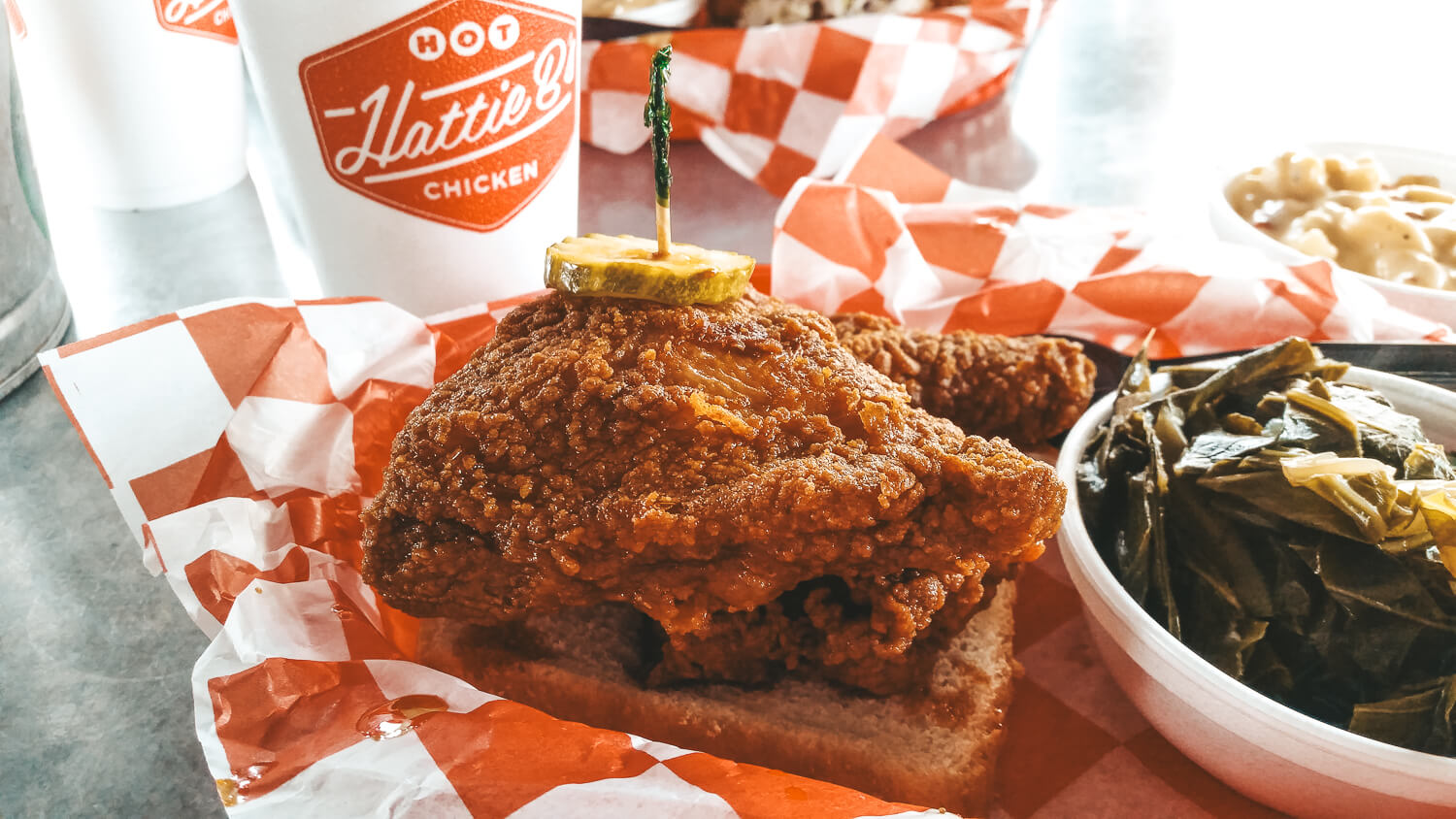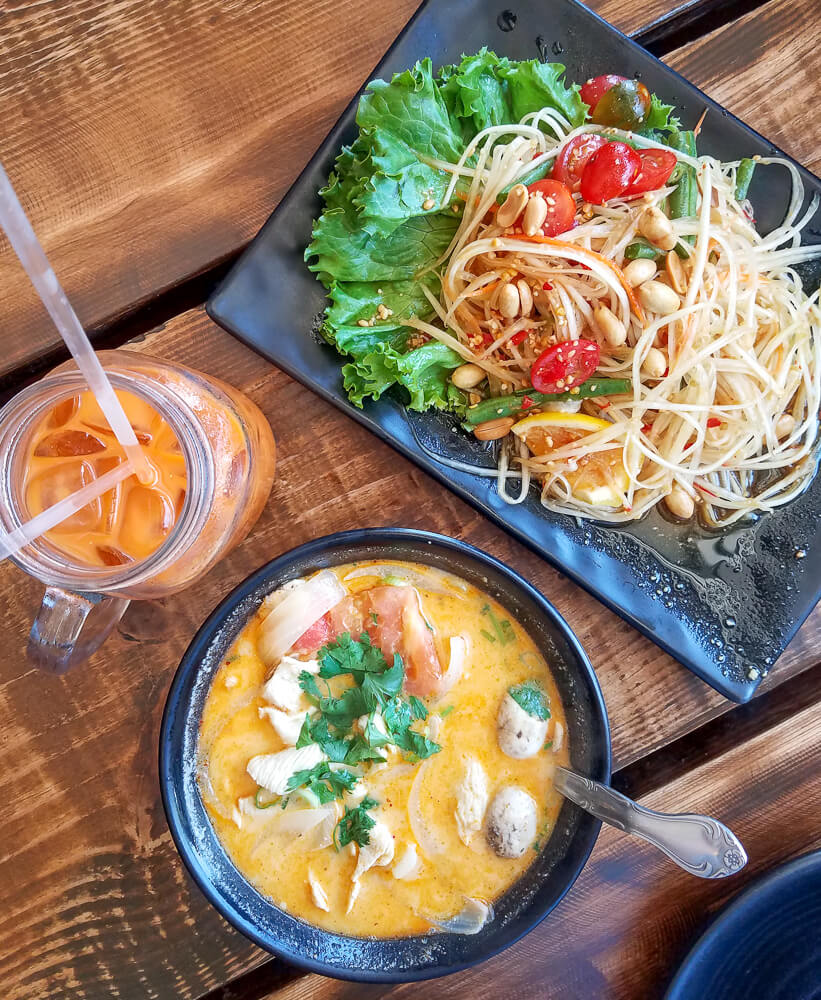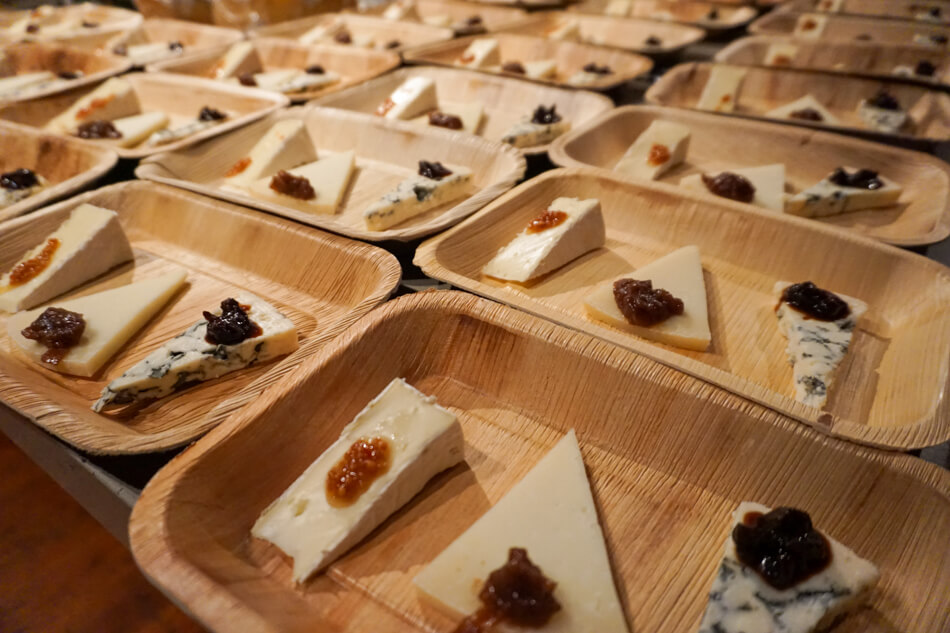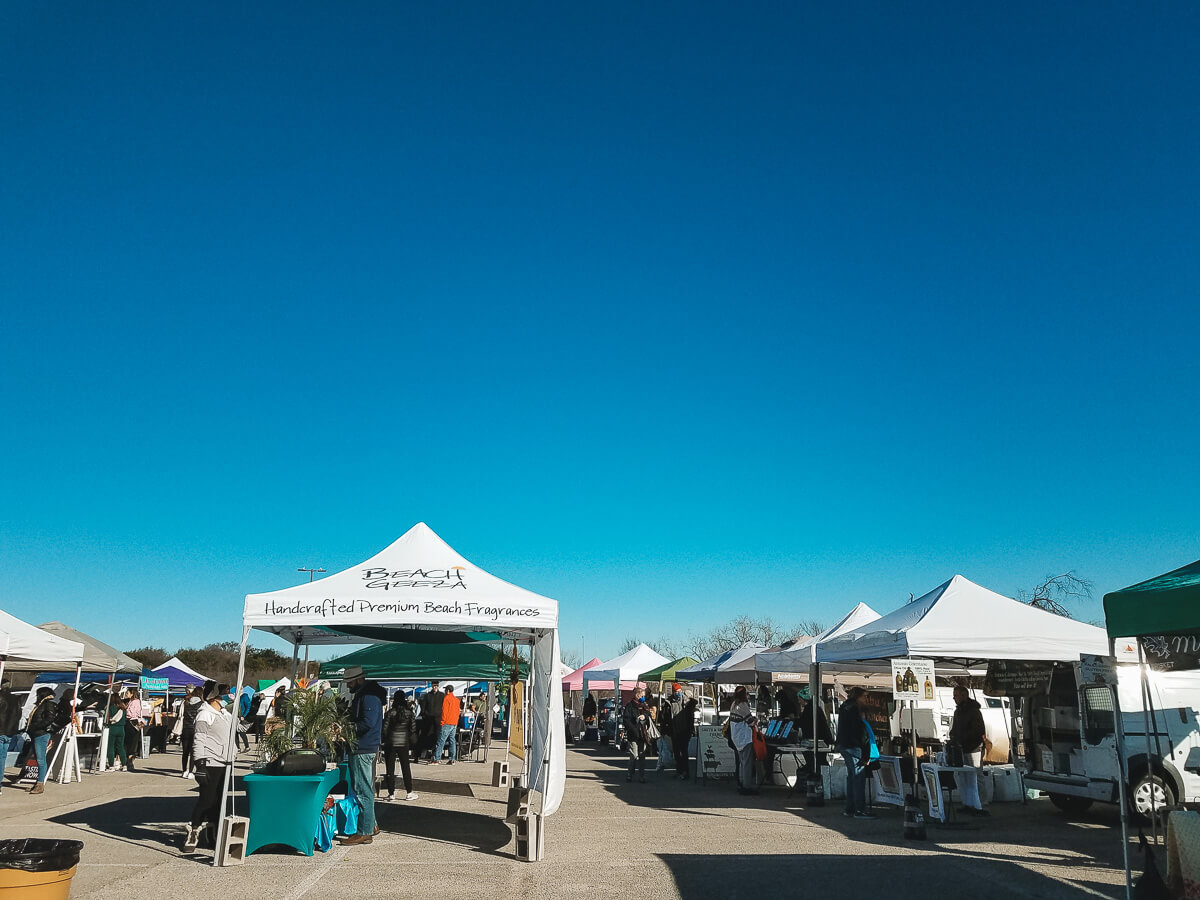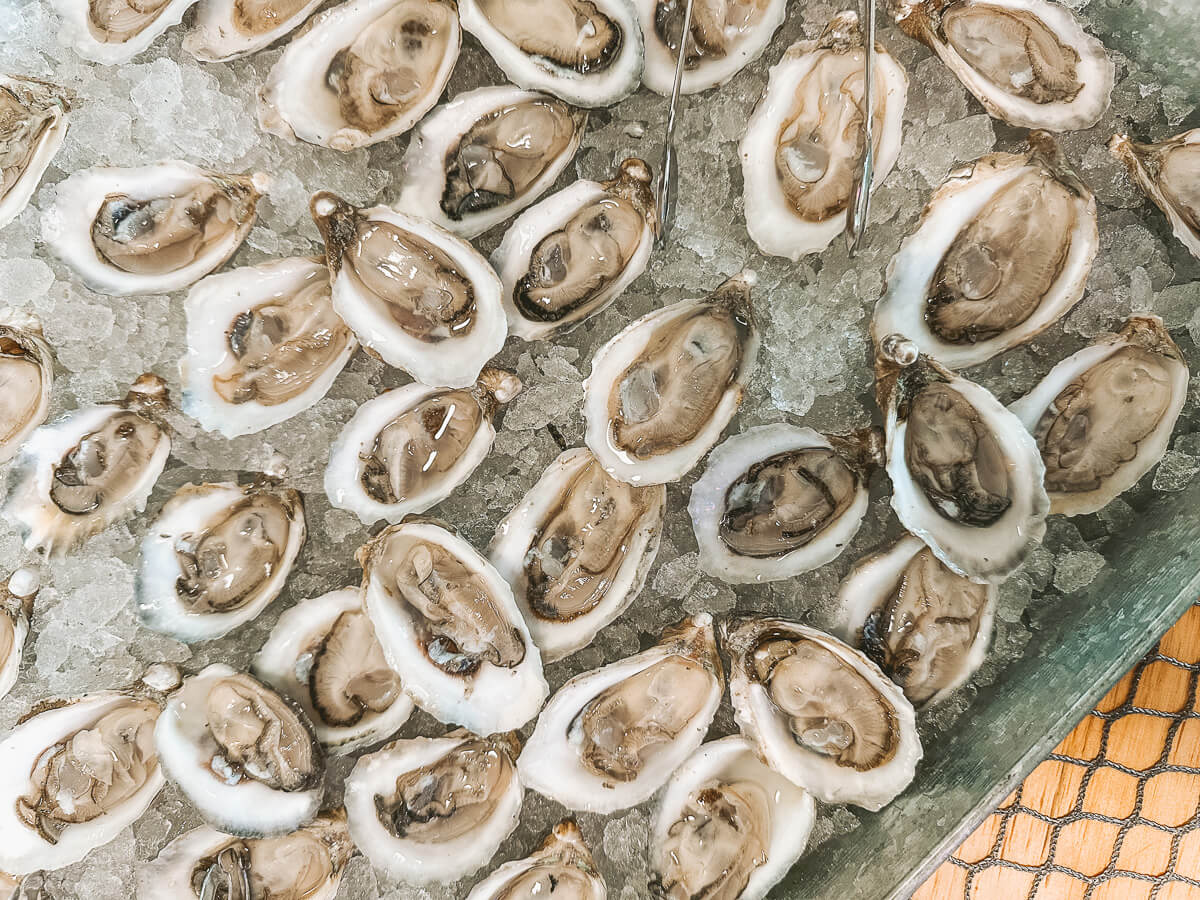This year, I’m taking on a farm-to-table, #localmonthly challenge where I eat local, home-cooked meals for one day every month. All ingredients from these meals are from Texas.
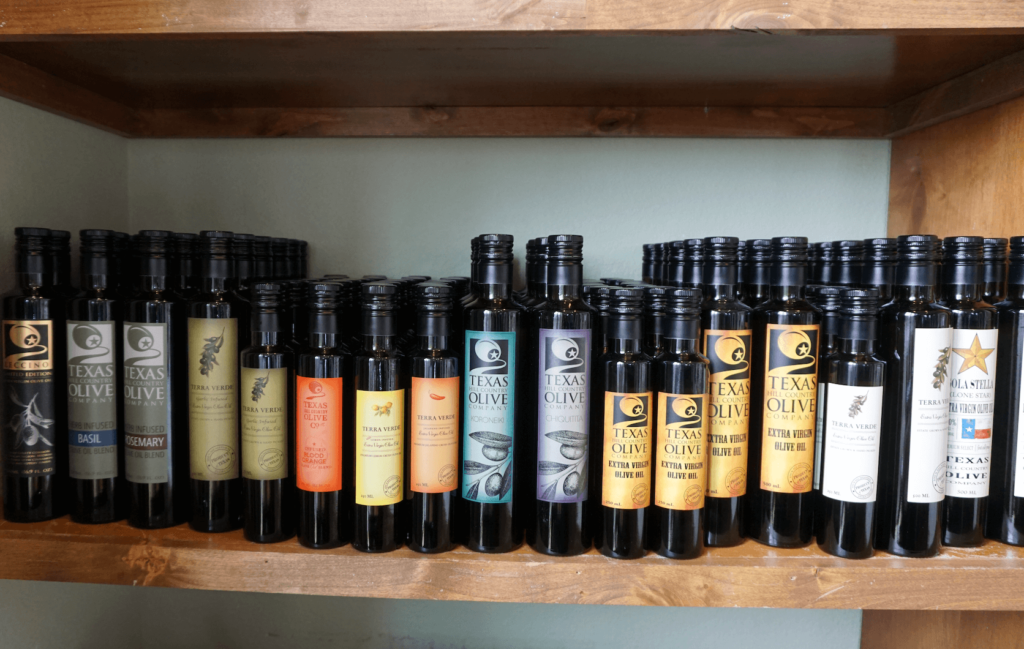
Part of the fun of this farm-to-table challenge is being able to learn more about ingredients and the local companies that are passionate about them. This means deep-diving into their products and history. It even means visiting their farm, like this month’s feature, Texas Hill Country Olive Company in Dripping Springs. I’m excited to share what I learned about olives, olive oil, and more!
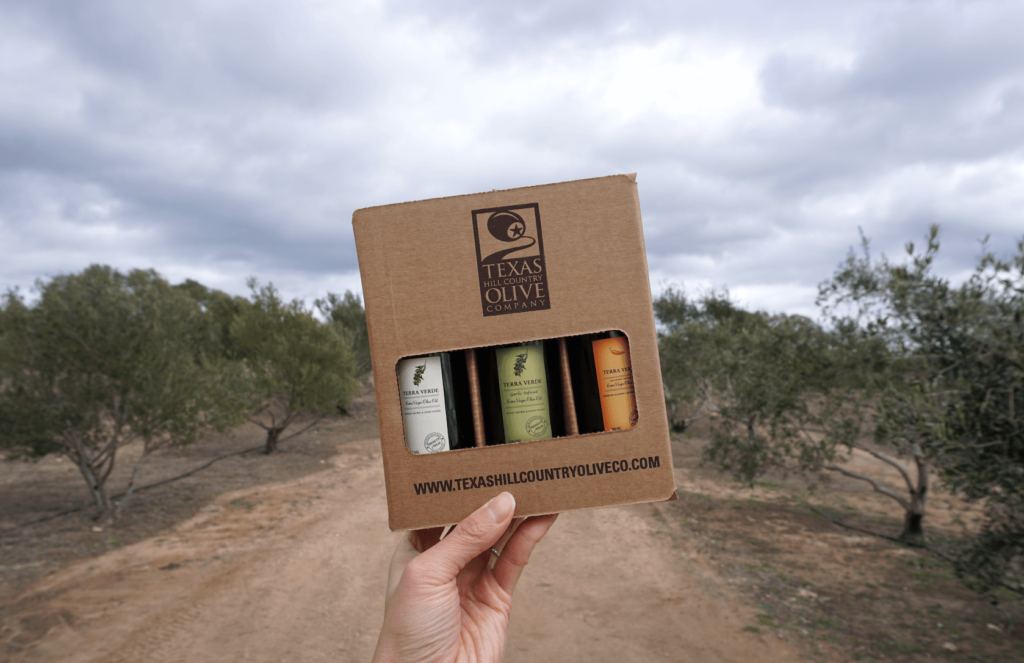
Local Olive Oil from Texas Hill Country Olive Company
At the end of January, we had a weekend stay in Fredericksburg, so it was a good time to stop by Texas Hill Country Olive Company. I had bought their olive oil at my farmers market because we use so much olive oil. I knew it would be a staple for the challenge.
Texas Hill Country Olive Company is the first organic farm in Texas, and they grow their olives from March to October.
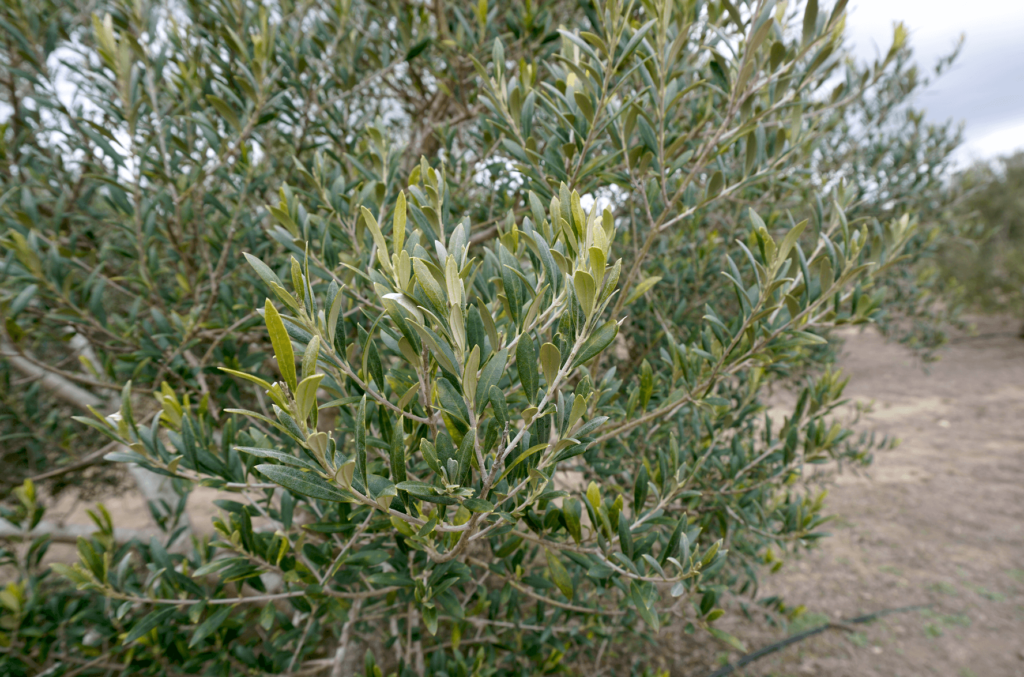
With our ticket ($6 per person), we learned so much about how olives go from the tree to the bottle. We also got to tour the orchard and processing area.
Here are some of the interesting tidbits I learned about growing olives:
- Olives thrive in hot and dry climates. If it’s a coastal area, they thrive in higher elevations
. - Sloping land and hills provide natural irrigation to olive orchards
. - Texas soil is good for olives because the limestone adds alkaline to the soil
. Cover crops like clover and daisies are grown in between the trees to help fertilize them.- Breeze is good on an olive farm because if the tree is not self-pollinating, the breeze helps pollinate.
- The color of the olives depends on when you pick them. Black means they’re ripe.
- They have high fences around the orchard to keep deer out since they eat the flowers
. Besides deer, olive trees don’t have many issues with birds or insects. The olive mite can take out many trees though.
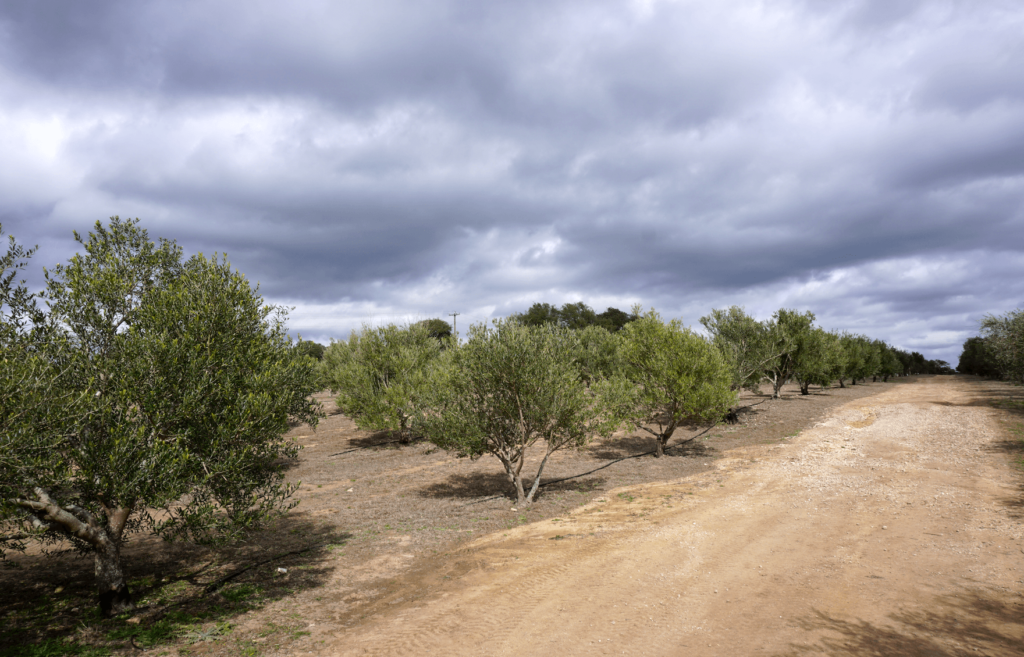
Here are some of the interesting things I learned about processing olives into olive oil and buying olive oil:
- For the oil to be considered extra virgin, the olive does not touch the ground and it must go from tree to mill within 72 hours.
- Texas Hill Country Olive Company takes about 7lbs of olives to make one 500ml bottle.
- About 70% of imported olive oil is fake, so it’s better to buy domestic. Other countries don’t have the same regulations as the U.S. Food and Drug Administration.
- The U.S. uses 10% of the olive oil produced in the world while only producing .5% of it.
- The olive paste that remains after all the oil is pressed out can be used for goat food because it helps with their poor digestion.
- Be sure to use your olive oil within three to six months of opening the bottle. Keep it for two years if it hasn’t been opened.
- Store your olive oil in a cool, dry place like your pantry.
- Things that will make olive oil go bad: heat, oxygen, light, and time.
Of course, we couldn’t leave without tasting all their olive oil varieties and picking up more olive oil to use.
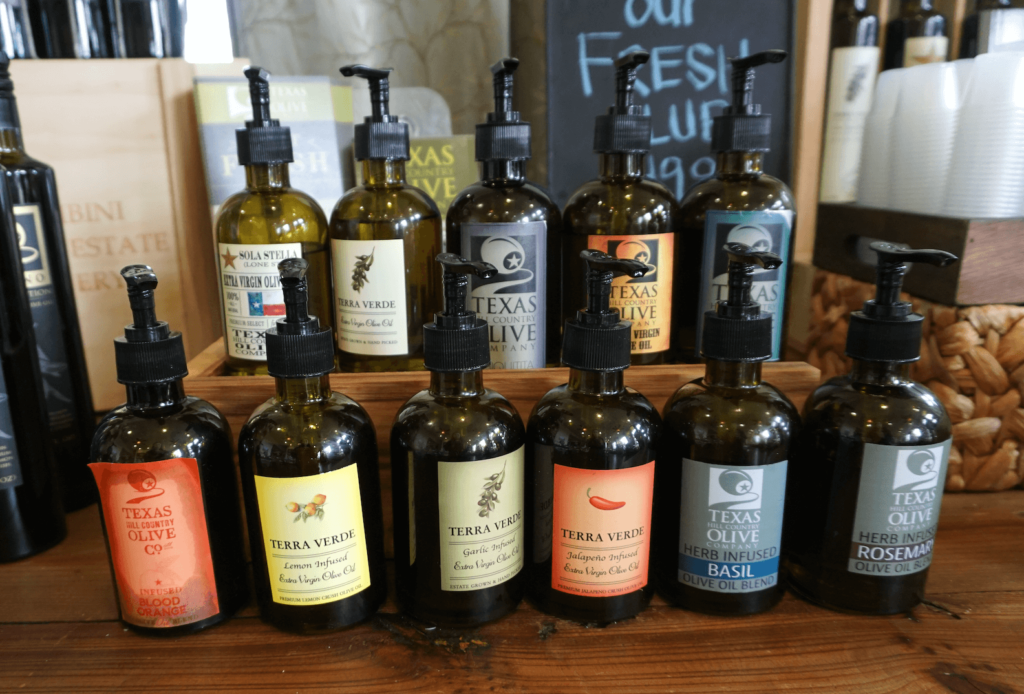
February’s Farm-to-Table Meals
As I was planning out my meals, I wanted to include ones that were heavy with olive oil to celebrate Texas Hill Country Olive Company’s products.
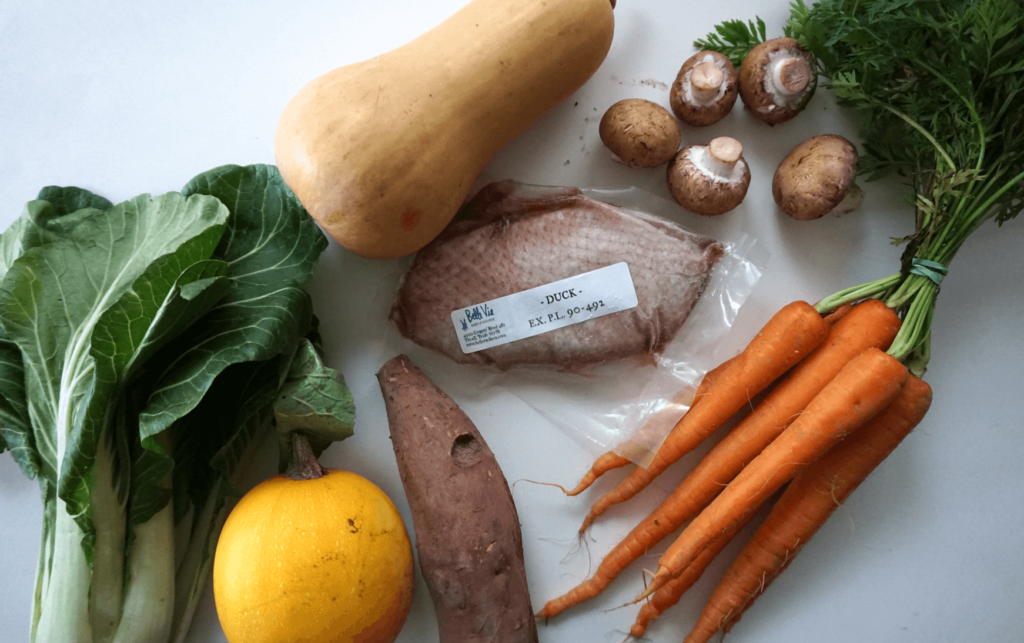
Here’s what I ended up buying:
- Eggs from a friend’s chickens in Manor, TX ($0.00)
- Half lb of baby
bellas from Kitchen Pride Mushrooms of Gonzales, TX ($5.50) - One bunch of kale and one bunch of bok choy from Johnson’s Backyard Garden of Austin, TX ($6.00)
- One butternut squash and one spaghetti squash from Engel Farms of Fredericksburg, TX ($7.00)
- One bunch of carrots and one sweet potato from Fruitful Hill Farm of Bastrop, TX ($5.25)
- Duck breast (less than
a lb ) from Belle vie Farm and Kitchen of Thrall, TX ($11.00)
And here are the resulting meals:
Breakfast: Mushroom and Kale Scramble with Fried Egg
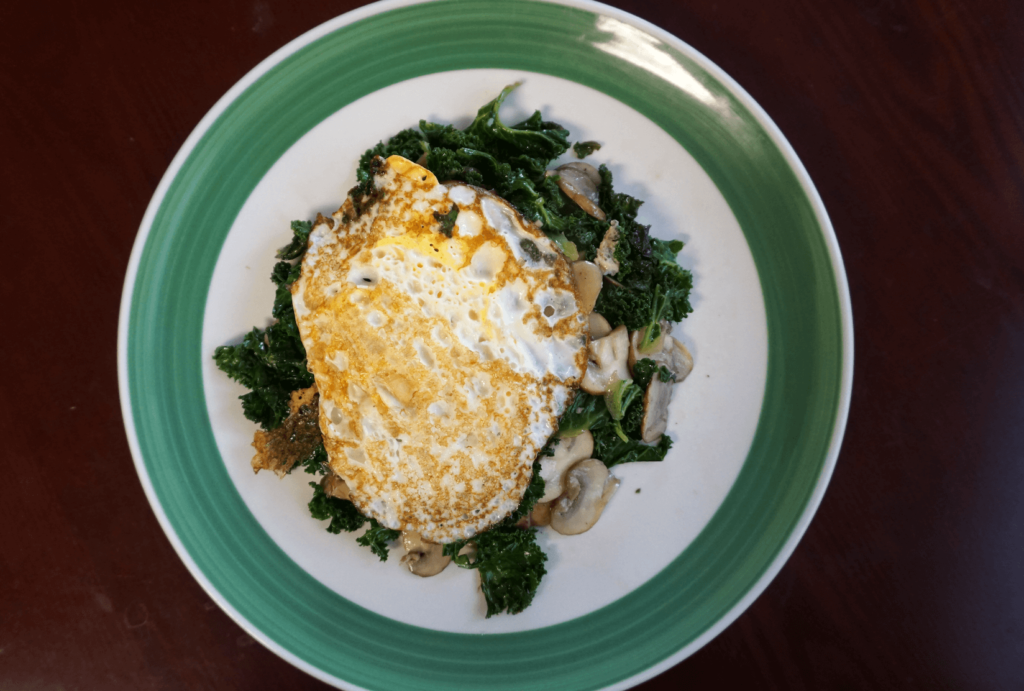
Lunch: Sweet Potato Hash with Kale and Egg
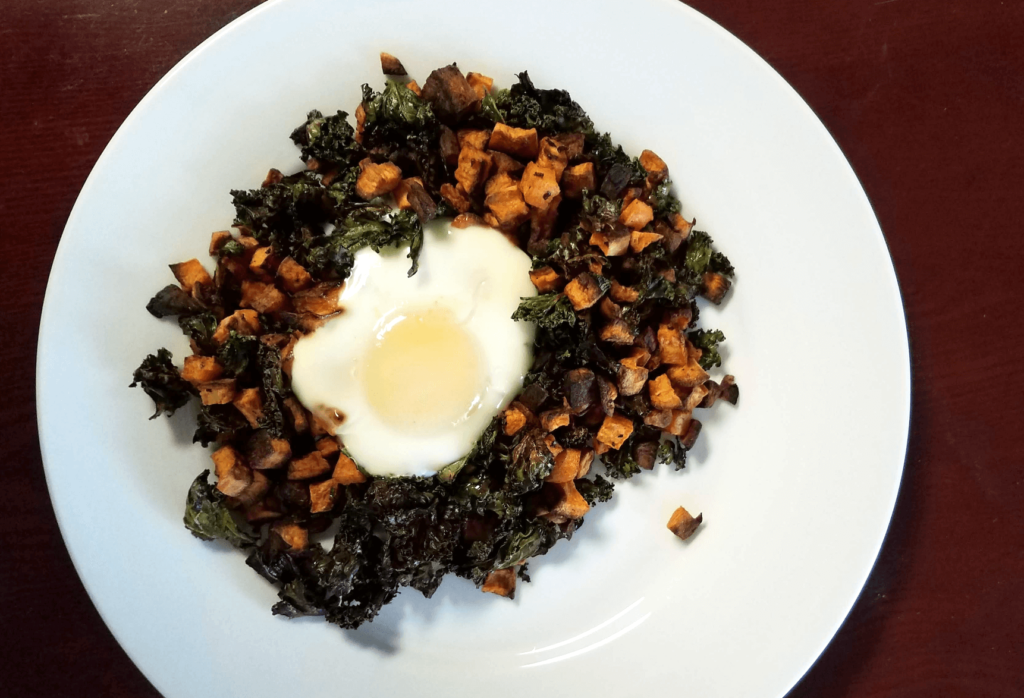
Snack: Spaghetti Squash with Olive Oil, Salt,
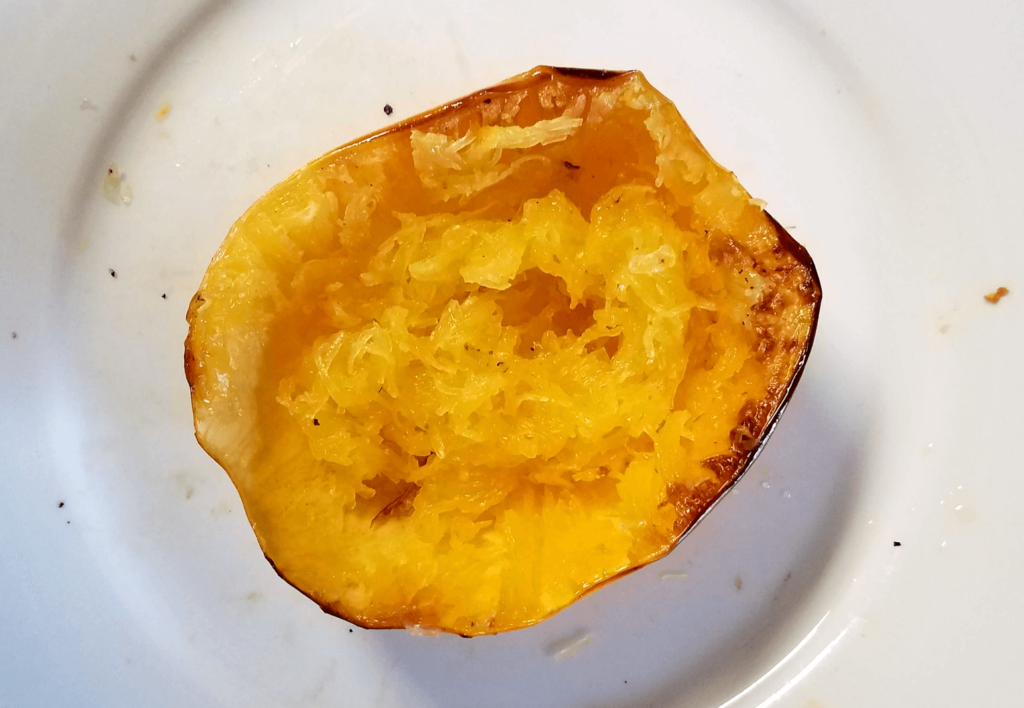
Dinner: Roasted Duck Breast, Bok Choy, Butternut Squash, Carrots
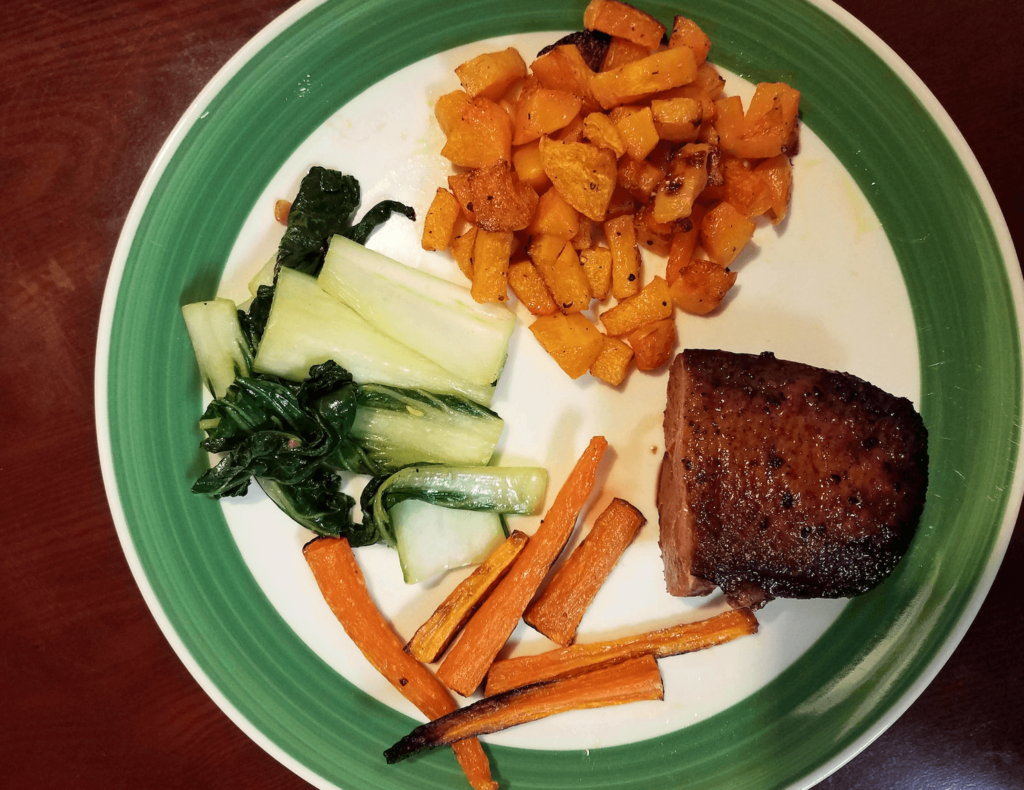
Tidbit of the Month: Texas Sugar
As if everything above about olive oil wasn’t enough, I wanted to share what I learned about sugar. This came about as I was trying to figure out how I can make dessert. Texas does grow sugar cane in the Rio Grande Valley, but to my knowledge, the sugar produced from it isn’t sold locally. The Domino brand claims to buy 100% of the sugar grown and produced in Texas.
Conclusion
I’m
I’m learning a lot and becoming more and more curious about why and how we eat what we do. For example, I started wondering if our taste buds have evolved to want and need more flavors. Recipes these days include so many spices, ingredients, and components but we didn’t always eat this way. Did we evolve to feel more accomplished if the recipe was harder or are we craving the flavors? Of course, trade and globalization introduced many more ingredients, which probably also had something to do with this! If you’re thinking this all sounds like Slow Food USA talk, I would agree!
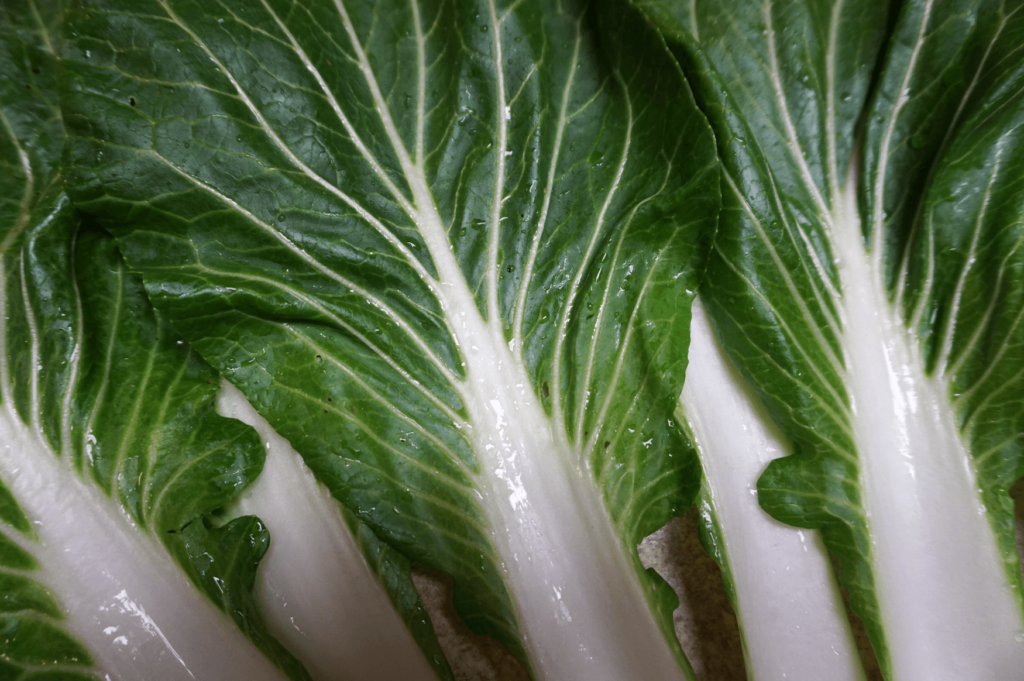
Discovering and getting to know local companies has also been enriching. I’m REALLY excited about next month’s adventure. Two words: BABY GOATS. Stay tuned! (But to clarify, not goats to eat but goat’s milk makes some magical things.)
I might be posting about this once a month, but I welcome conversations any time! Feel free to send over articles you find, insights you have, and what you’re thinking. (It’s ok to geek out with me. 😀 )
Until next month, happy eating and learning!
Are you trying local eats? Tell me all about it below!
P.S. See all the posts from this challenge here.
You can find me on Instagram, Facebook, Twitter, Pinterest, and Bloglovin’. You can also subscribe to the exclusive email list.
